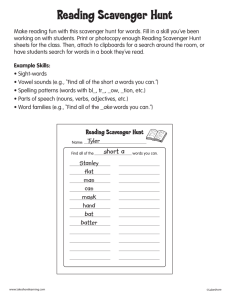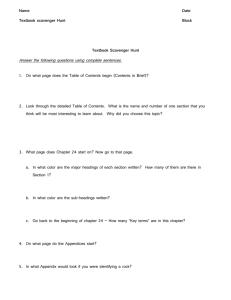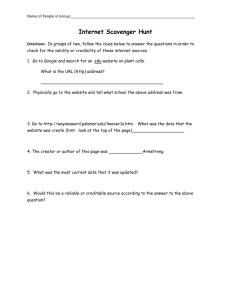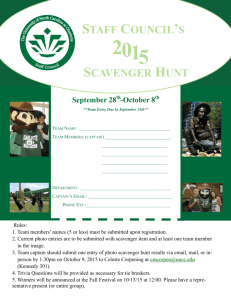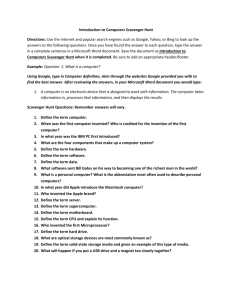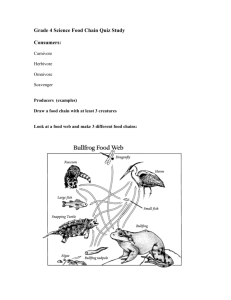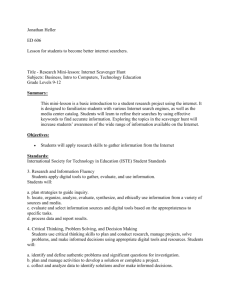grade1-theme1
advertisement
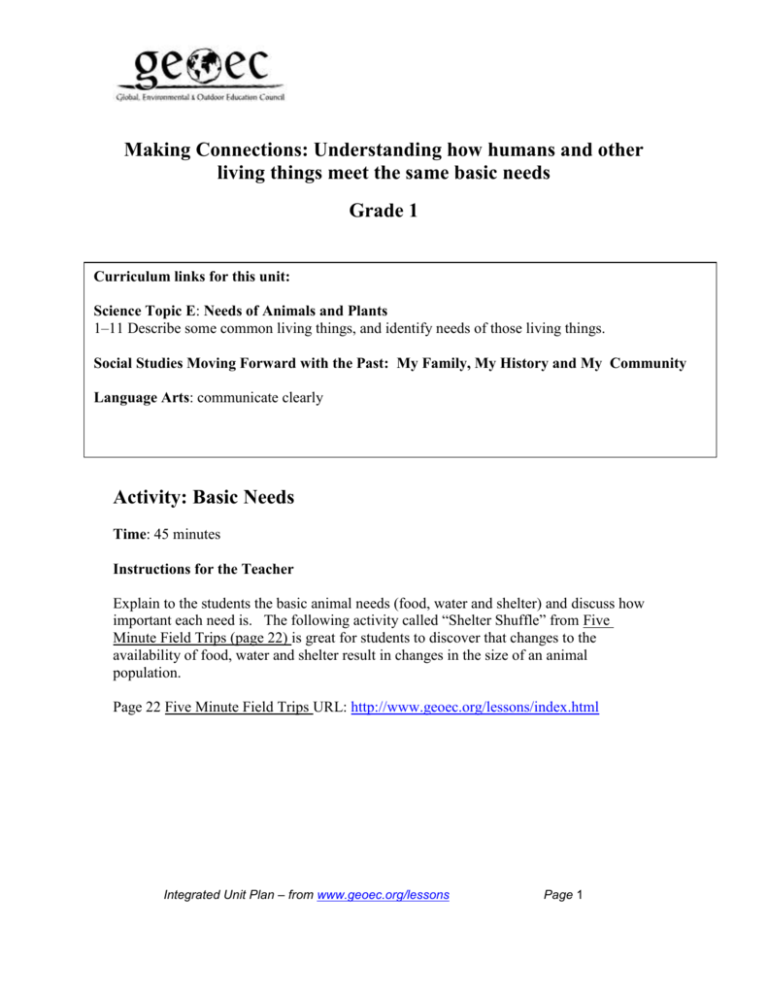
Making Connections: Understanding how humans and other living things meet the same basic needs Grade 1 Curriculum links for this unit: Science Topic E: Needs of Animals and Plants 1–11 Describe some common living things, and identify needs of those living things. Social Studies Moving Forward with the Past: My Family, My History and My Community Language Arts: communicate clearly Activity: Basic Needs Time: 45 minutes Instructions for the Teacher Explain to the students the basic animal needs (food, water and shelter) and discuss how important each need is. The following activity called “Shelter Shuffle” from Five Minute Field Trips (page 22) is great for students to discover that changes to the availability of food, water and shelter result in changes in the size of an animal population. Page 22 Five Minute Field Trips URL: http://www.geoec.org/lessons/index.html Integrated Unit Plan – from www.geoec.org/lessons Page 1 Activity: Nature Scavenger Hunt Time: 30 minutes Instructions for the Teacher Observe and identify living and non-living things in the environment and discuss the difference (i.e. living is a flower growing in the garden and non-living is the flower someone picked for a bouquet). Do a schoolyard scavenger hunt where the students collect non-living things and look for living things. Nature Scavenger Hunt page 6 Five Minute Field Trips http://www.geoec.org/lessons/index.html (for instructions and a complete checklist) Activity: Environmental Lap Sit Time: 5 minutes Instructions for the Teacher In this activity, each student represents an important part of a food web – predator, prey, sun, water, plants, etc. (give each person an identity before you start). Students stand shoulder to shoulder in a circle, all the students raise their right hand, turn to the right, put their right hand on the persons shoulder in front of them, take a sideways step into the circle and slowly try to sit down on the person’s lap behind them (can be in unison or one after the other, try both). The students try to maintain balance. Remove some parts of the food web … Talk about what happens when a certain portion of the food web is taken away from the circle. Integrated Unit Plan – from www.geoec.org/lessons Page 2 Activity: Belonging to a community Time: 30 minutes Instructions for the Teacher Examine how each student belongs to the community. Talk about what lessons they may go to (i.e. swimming, skating, skiing), ask if they are part of a church group, if they are in a club of some sort. Relate this discussion of community to the animal community …What about wolf packs? How does each wolf know it’s pack? Do they allow other wolves into their pack? Or, talk about the beaver and the communities they have. In the Kananaskis Country activity “Welcome to my home” the students can Explore a beaver's home and the community in which the beaver lives. Here is the URL for this activity: http://www.cd.gov.ab.ca/enjoying_alberta/parks/featured/kananaskis/ed_materials.asp welcome to my home Concluding Activity: Memory Review Time: 5 minutes Instructions for the Teacher: Review how animals and humans both meet the same basic needs. Play a memory game about the basic needs using flash cards with food, water, shelter and safety. Other Links and Resources: • “Everybody needs a home” (Project Wild page 31) – this is a good activity for students to understand that all animals and humans need a home to live in.URL: http://www.projectwild.org/ Integrated Unit Plan – from www.geoec.org/lessons Page 3
